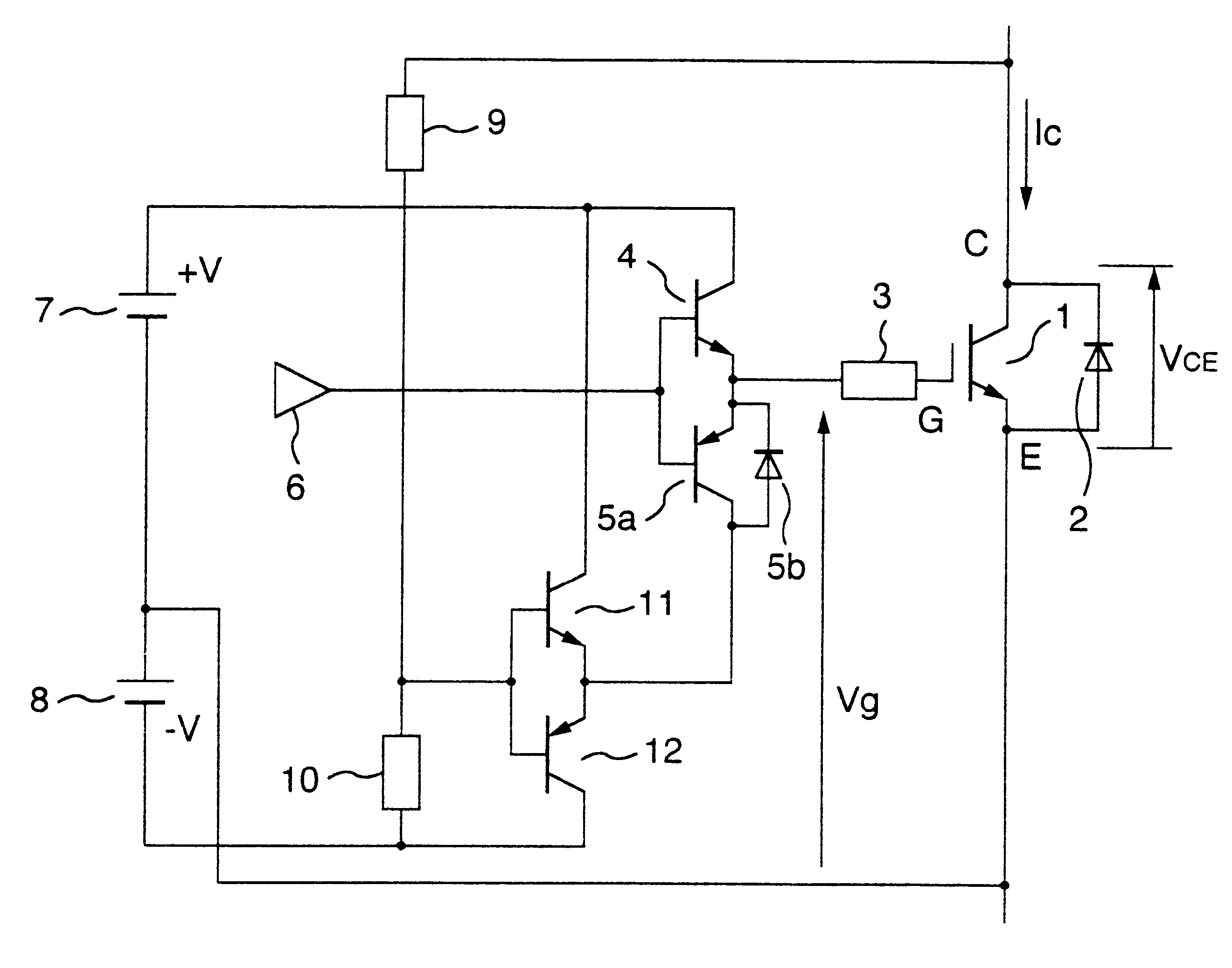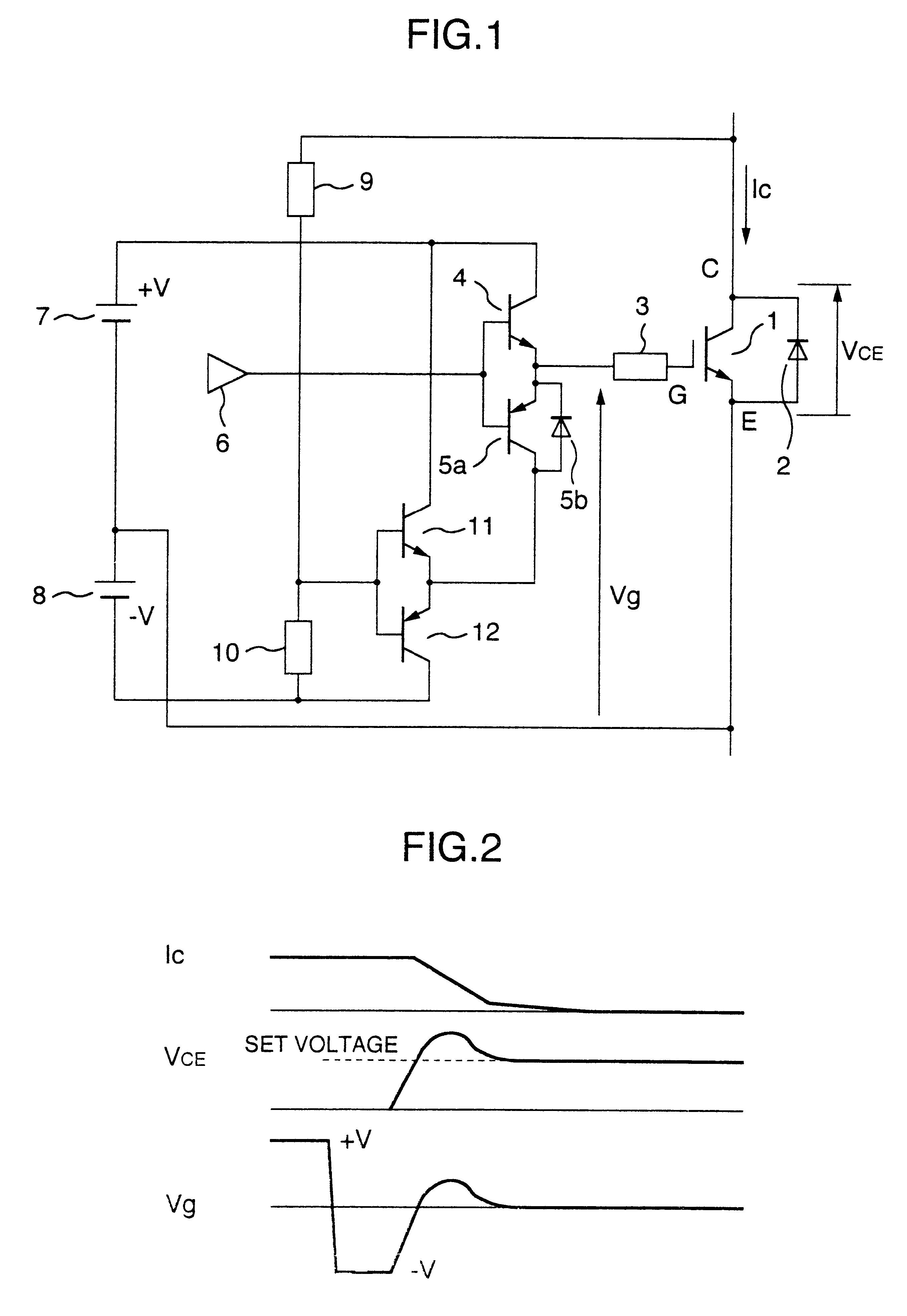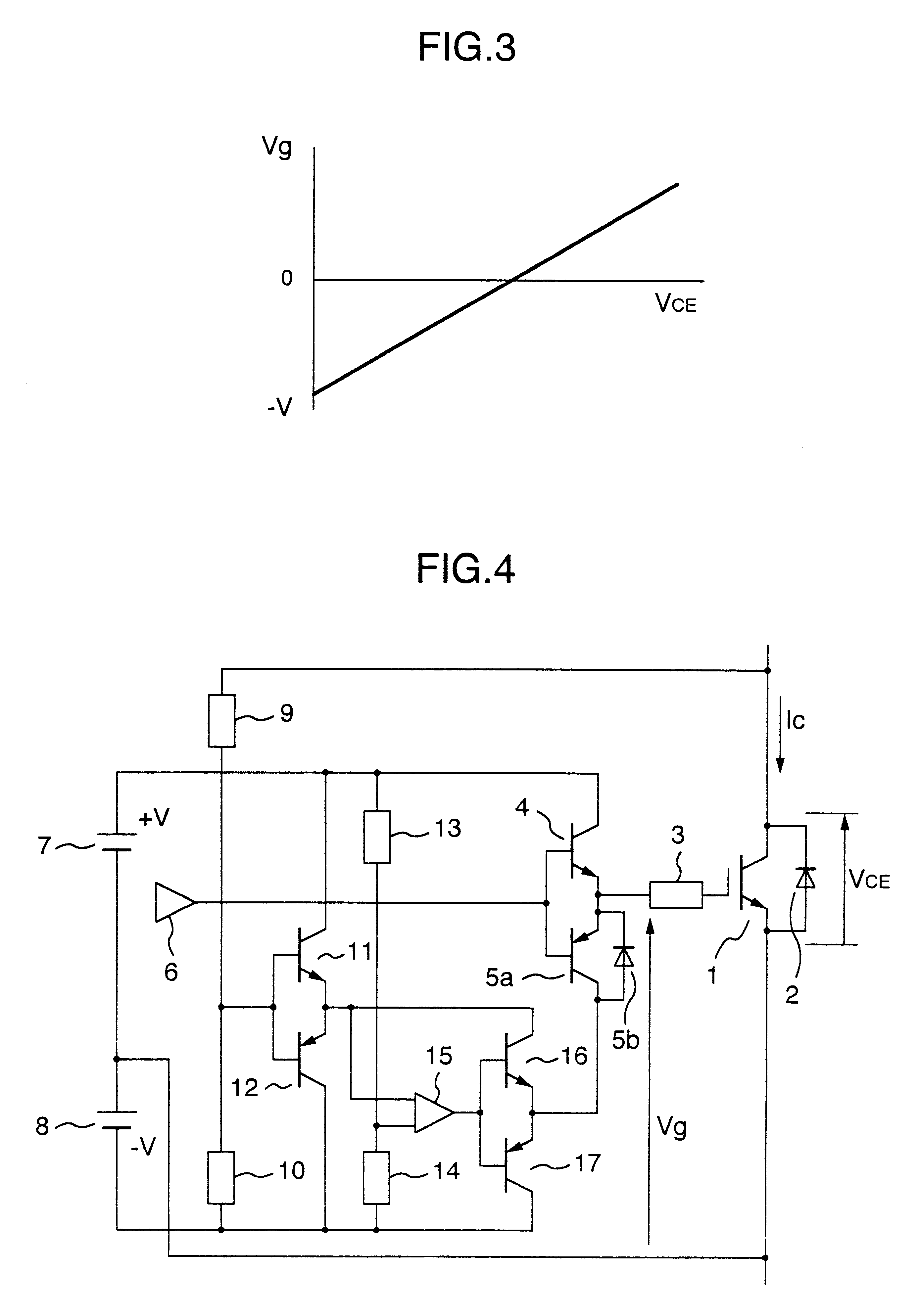Semiconductor power converting apparatus
a technology of semiconductor power, which is applied in the direction of power conversion system, electronic switching, pulse technique, etc., can solve the problems of reducing the converter efficiency, increasing the cost of the semiconductor power converting apparatus, and reducing the efficiency of the converter
- Summary
- Abstract
- Description
- Claims
- Application Information
AI Technical Summary
Benefits of technology
Problems solved by technology
Method used
Image
Examples
first embodiment
FIG. 1, FIG. 2 and FIG. 3 are diagram for indicating a first embodiment mode of the present invention.
FIG. 1 represents an arrangement of a main circuit in unit of an arm. As indicated in this FIG. 1, in this embodiment mode, a cross-connected diode 2 is connected to an insulated-gate transistor 1, and both a transistor 4 and another transistor 5a are connected to a gate resistor 3. Then, both an ON command and an OFF command are supplied from a control circuit 6 to these transistors 4 and 5a. Also, a power supply 7 and another power supply 8 are provided so as to set bias voltages. As to a collector electrode C of the insulated-gate transistor 1 and a minus-polarity terminal of the power supply 8, a series member constituted by a resistor 9 and a resistor 10 is connected. A voltage appearing between the collector electrode C of the insulated-gate transistor 1 and the minus-polarity terminal of the power supply 8, which is divided by the resistor 9 and the resistor 10, is transferre...
second embodiment
FIG. 4 and FIG. 5 indicate a second embodiment mode of the present invention.
It should be noted that the same reference numerals shown in FIG. 1 will be employed as those for denoting the same, or similar circuit elements used in the second embodiment mode shown in FIG. 4 and FIG. 5, and also other embodiment modes (will be discussed later), and therefore, descriptions thereof are omitted.
FIG. 4 represents an arrangement of a major circuit in unit of an arm. In this embodiment mode, a voltage detected by a detecting circuit having a similar circuit arrangement to that of the above-explained first embodiment mode is compared with a reference voltage decided by a resistor 13 and a resistor 14 in a comparator 15. The detecting circuit divides a voltage appearing between a collector of an insulated-gate transistor 1 and a minus-polarity terminal of a power supply 8. When a detected voltage is lower than, or equal to the reference voltage, the comparator 15 causes a transistor 16 to be t...
sixth embodiment
FIG. 12, FIG. 13 and FIG. 14 are diagram for indicating a sixth embodiment mode of the present invention.
FIG. 12 represents an arrangement of a main circuit in unit of an arm. Similar to the circuit arrangement of the first embodiment mode, a resistor 10 used to divide a voltage appearing between a collector of an insulated-gate transistor 1 and a minus-polarity terminal of a power supply 8 is subdivided into a resistor 10a and another resistor 10b. A switch 23 is connected in parallel to the resistor 10b. The switch 23 is brought into an OFF state immediately after the insulated-gate transistor 1 is turned OFF, and a V.sub.CE set voltage set by the resistor 9 and the resistors 10a and 10b is brought into a predetermined condition. After a peak voltage by turning OFF the insulated-gate transistor 1 is converged up to the power supply voltage, the switch 23 is turned ON, so that the resistor 10b is shortcircuited. As a result, the set voltage with respect to the voltage V.sub.CE is c...
PUM
 Login to View More
Login to View More Abstract
Description
Claims
Application Information
 Login to View More
Login to View More - R&D
- Intellectual Property
- Life Sciences
- Materials
- Tech Scout
- Unparalleled Data Quality
- Higher Quality Content
- 60% Fewer Hallucinations
Browse by: Latest US Patents, China's latest patents, Technical Efficacy Thesaurus, Application Domain, Technology Topic, Popular Technical Reports.
© 2025 PatSnap. All rights reserved.Legal|Privacy policy|Modern Slavery Act Transparency Statement|Sitemap|About US| Contact US: help@patsnap.com



